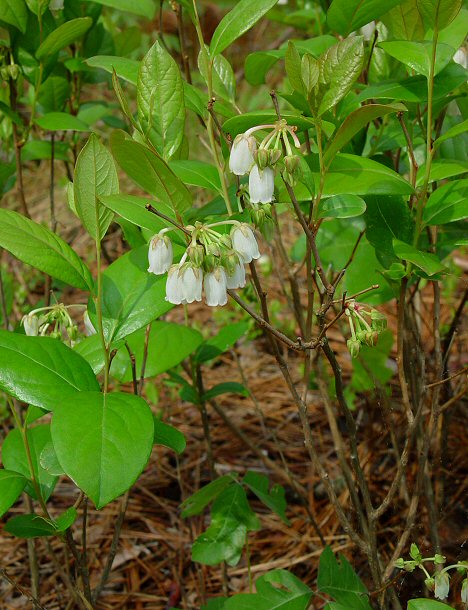Lyonia mariana (L.) D. Don
Staggerbush

Native
CC = 10
CW = 0
MOC = 1
© DETenaglia
Lyonia mariana (L.) D. DonStaggerbush | |
 |
Native CC = 10 CW = 0 MOC = 1 |
© DETenaglia |
|
Family - Ericaceae Habit - Rhizomatous shrub, colonial. Stems - To 2.0 m tall, the bark gray, shallowly furrowed, and usually shredding in thin, narrow strips. Twigs glabrous to sparsely short-hairy, reddish brown to brown, becoming gray with age, often developing small black spots, lines, or streaks, the winter buds conic to ovoid, with 2-6 overlapping scales.
Leaves - Alternate, simple, short-petiolate, well-spaced along branches. Blades 3-10 cm long, 1-5 cm wide, narrowly to broadly elliptic, narrowed or tapered to a sharply pointed tip, narrowed or less commonly rounded at the base, the margins entire, slightly thickened, the upper surface glabrous to sparsely short-hairy along the main veins, the undersurface with scattered minute, brown papillae, also sparsely to moderately short-hairy along the main veins.
Inflorescences - Loose umbellate clusters along and at the tips of leafless branches, the flower stalks 5-20 mm long, with minute bracts at the very base. Flowers - Actinomorphic, hypogynous, fragrant. Calyces deeply 5-lobed, 4-7 mm long, the lobes narrowly oblong-triangular to nearly linear, sharply pointed at the tip, minutely glandular and sometimes also sparsely hairy. Corollas cylindrical to urn-shaped, 7-14 mm long, shallowly 5-lobed, the lobes spreading to recurved at flowering, white or less commonly pinkish-tinged, the outer surface sparsely glandular. Stamens 10, not exserted, the filaments with a prominent S-shaped curve, broadened at the base, densely hairy, with 2 short spurs near the anther-filament junction, the anthers lacking tubes or awns at the tip, but with a white, powdery deposit on the dorsal surface, dehiscing by 2 terminal pores. Ovary superior, glabrous, concave at the tip, with 5 locules, the placentation axile. Style 5-6 mm long, straight, usually slightly exserted at flowering, the basal portion persistent at fruiting, the stigma capitate, slightly lobed.
Fruits - Capsules 5-6 mm long, 4-5 mm wide, urn-shaped to pear-shaped, glabrous, brown with 5 thickened, pale brown ribs. Seeds 0.7-1.5 mm long, oblong-ovoid, somewhat angled, truncate at the tip, with a minute tail at the base, brown, the surface smooth. Flowering - May - June. Habitat - Sandy pine-oak woods, ravines in mesic upland forests. Origin - Native to the U.S. Lookalikes - Broadly, Staphylea trifolia, Diospyros virginiana. Other info. - This attractive, shrubby species is very rare in Missouri, having been collected only once in the state, in 1953. Its main range within the U.S. comprises two disjunct regions. One of these is mainly south of Missouri, in Texas, Louisiana, Oklahoma, and Arkansas. The other, where the plant is much more common, is along the Atlantic coast. The flowering plant is easy to identify from its large, tubular, white flowers which hang in groups. The leaves of the plant are quite toxic due to their content of complex diterpenoids collectively known as grayanotoxins. These cause a range of neurological and gastrointestinal maladies which account for the plant's common name "staggerbush." Photographs taken at the Weymouth Woods Sandhills Nature Preserve, NC., 4-27-03 (DETenaglia). |